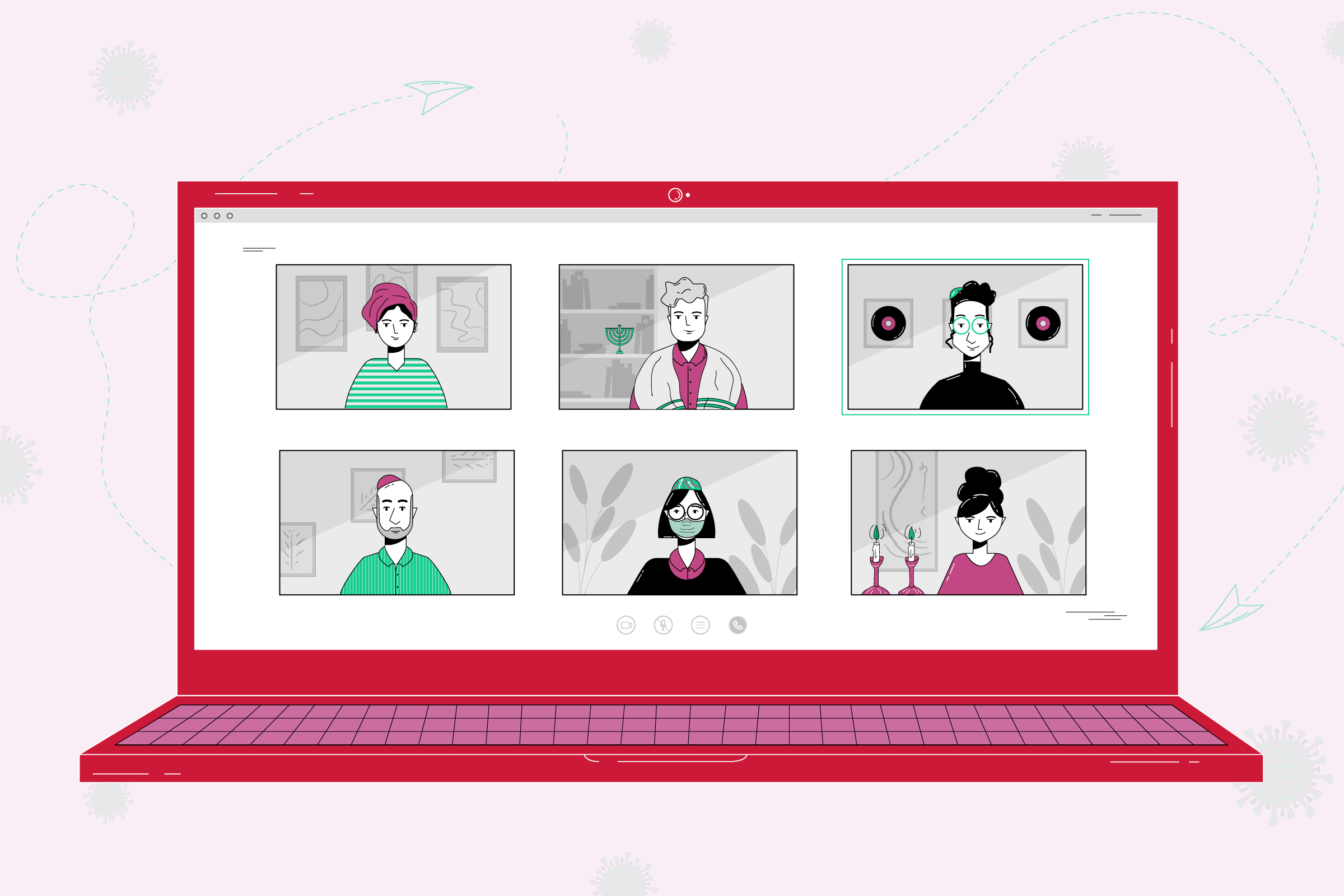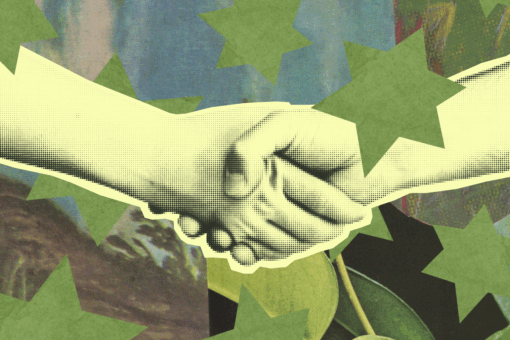“A sacrifice, in English, means that you’re giving up something,” Rabbi Susan Tendler explains to me patiently over the phone. Indeed, we are speaking during a time of ostensibly great sacrifice — communities everywhere have been giving up their supplies, their salaries, and their lives in order to combat the spread of a global pandemic.
For those fortunate enough to avoid the worst impacts COVID-19 has wrought thus far — hospitalizations, homelessness, displacement, death — there still remains undeniable loss. Social distancing and other isolation measures have decimated most interpersonal interactions, threatening to take religious ritual with it. In Judaism, which often explicitly demands group prayer in the form of a minyan, or gathering of at least 10 Jewish adults, many struggle to give up the practices that ground their daily lives. But on the phone last month, Rabbi Tendler offered an alternative definition to sacrifice. “In Hebrew, it means to draw closer.”
The act of promoting closeness came up repeatedly in the conversations I had with rabbis and rabbas — one of several titles under which Orthodox female clergy are ordained — from across Jewish denominations, who described in detail the ways in which they are adapting their practices to these unprecedented circumstances.
For clergy who more closely follow halacha, laws and practices derived from the Torah, isolation means rethinking the basic structure of their daily services. For others, it means finding ways to give virtual Shabbat services more meaning. But their approaches are unified by an optimistic outlook on the ongoing crisis, a sense that there is beauty to be found even amidst the daily disruptions.
For Rabbi Miriam Grossman, who leads Kolot Chayeinu, a non-denominational congregation in Brooklyn, these shifts fit into a larger philosophy about adapting to contemporary life. “I studied at SVARA, the queer yeshiva, and there, as in rabbinical school, we talked a lot about these major shifts that happen in history where the Jewish world, like the whole world, must innovate and evolve tradition in order to preserve the tradition.” For her congregation, that has meant moving Shabbat services to Zoom. Kolot Chayeinu, like many congregations, practices group aliyot, in which those who feel moved approach the bimah before a Torah reading. For Rabbi Grossman, preserving the embodiment of these ritual practices proved paramount. “I’ve still been giving people these big group [aliyah] blessings, and I worried that people might forget in this time that we’re not computers; that you still have a body in your home.” To create the same feeling of collectivity in isolation, Rabbi Grossman now advises her congregants to engage in the physicality of the gesture. “I invited people to mark [aliyah] by putting your hand on your own heart.” To embody the meaning of aliyah as ascent, she suggests that congregants “let the crown of your head rise a little higher, just sit in that posture a little higher.” To her slight surprise, “it felt real.”
Rabbi Grossman also spoke of the interfaith networks, such as a Facebook group started by Rabbi Joshua Lesser, that religious leaders have used to share inspiration and guidance during the pandemic. “A lot of what I’ve seen posted, or posted myself, is just questions. But even that can be affirming, to know that you’re asking the same questions as people across the country, and you’re not alone in that.”
Rabbi Tendler, who became the first female rabbi in Chattanooga, Tennessee when she began her tenure at the Modern Conservative B’nai Zion Congregation in 2013, has similarly taken isolation inspiration from interfaith clergy. Her synagogue building is set to be destroyed this year, marking this past Passover as potentially the last time that congregants could recite Yizkor, a memorial prayer, in their congregation. Rather than doing it virtually, Rabbi Tendler took inspiration from a local pastor, who organized a group gathering in which congregants drove to the church and listened to him speak from inside their cars via a radio broadcast. Rabbi Tendler hoped to attempt something similar for Yizkor on the eighth day of Passover, inviting cars to drive up to the building, one at a time, so that individuals can say Yizkor into a microphone, to be broadcast via radio to the surrounding cars .
However, the city of Chattanooga put out what she called a “fervent plea” to clergy across the city prior to the day of Yizkor to essentially ban drive-through services, citing environmental concerns and fears of maintaining social distancing. As an alternative, the synagogue ended up moving Yizkor to an earlier start time, right before Kabbalat Shabbat. Then, over Zoom, her congregates shared their reflections and remembrances virtually. In an ironic twist, the ban was lifted the following Saturday. But rather than let the experience deter her, Rabbi Tendler was looking ahead: “If we’re still sheltering in place, we’ll make sure we do something for Shavuot for Yizkor.”
With regards to counting a minyan, Rabbi Tendler looked to the Committee of Jewish Laws and Standards for guidance. In accordance with their edicts, a virtual minyan, in which at least 10 Jewish adults can see and hear each other via video chat, is valid. Though they will not host virtual services on Shabbat, they currently host a Wednesday minyan, as well as a Kabbalat Shabbat, bookending it with the afternoon service, mincha, rather than the evening service, maariv, as to not use electronics on a holiday.
For clergy in the Orthodox tradition, rules are generally more clear-cut: It is generally accepted, for example, that a minyan must be 10 men, and they must all be in the same physical location. Rather than lamenting the changes that must be made to accommodate social distancing — no minyan means leaving out key parts of the service, such as the recitation of the Amidah and saying Kaddish — some at the Hebrew Institute of Riverdale have taken this as an opportunity to expand inclusivity in their services. Rabbanit Bracha Jaffe, who some have recently dubbed the “Zoom rabbi,” has taken up the charge of leading tefillah for a growing community of daily virtual congregants, even though under typical circumstances, a woman following the Orthodox tradition would not be allowed to lead tefillah in front of other men.
Rabbanit Jaffe was quick to mention that there are still myriad ways for women to be involved in prayer, such as organizing the service. But in the absence of a physical minyan, Rabbanit Jaffe has now found herself in the previously unlikely role of leading tefillah (prayers) for a group of men and women spread across the country. As a recent example, she mentioned a Rosh Chodesh service, a holiday commemorating the beginning of the month that is often held with particular importance in feminist Jewish circles. She started adding songs to the service, and before long, she found members of the community were joining with their children, people who otherwise might not come to prayer.
When asked what extra effort she puts into making the services meaningful, she too connected it to a shared sense of humanity. “I really try very hard to greet every person by name,” she said. “[Zoom] is about the tefillah, but it is also about being seen. So even if a person’s camera is off, if I say ‘Hey Mitch, good morning,’ that person feels connected.”
On a more practical note, she offered alternatives to saying Kaddish, which mourners or those observing a yahrzeit, or anniversary of a loved one’s passing, would typically say in the presence of a minyan. “There are other ways to memorialize people, and one of them is learning a mishnah, because the letters of mishnah are the same letters of neshama (a Hebrew word that roughly translates to “soul” or “spirit”).”
For Rabbanit Bracha, she does not see a return to normalcy as an abandonment of these inclusive practices. Instead, she seems them as a positive change to be carried into our post-isolation lives, whenever that may be. “It could be meaningful if once a month, there could be an online pseudo-tefillah… It’s not detracting from what’s going to go back to the regular, usual, that’s not changing… It opens spaces for people who might not even want to come every day, but want a way to connect ritually and spiritually.” For her, these women-led services are not a repudiation of the gender roles set forth by Orthodoxy; it’s about answering a deeper longing for connection. “It’s more like, where can we open spaces that will fulfill people.”
Header image design by Grace Yagel; original image by SDI Productions/Getty Images.



